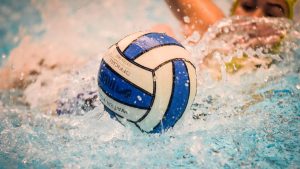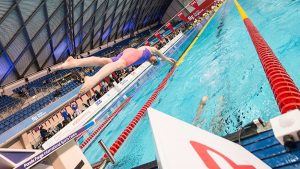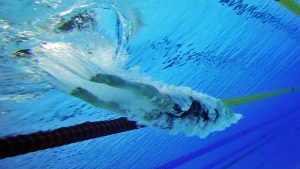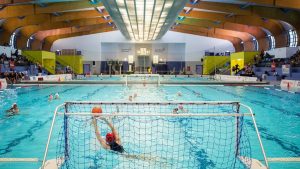 The Swimming Trust has donated £6,000 to fund two key initiatives in the Swim England Water Polo Strategy 2020-25 to help provide new opportunities at all levels of the sport to widen participation and support officials. A total of £4,500 will be used to make a series of short videos to promote mini-polo and water polo for children aged 8-14 on social media and to provide schools with grants to set up their own water polo clubs and teams. The remaining £1,500 will fund refereeing workshops hosted by the British Water Polo League to help aspiring and existing referees at all levels to ensure developing players are best prepared for playing at the top level.
The Swimming Trust has donated £6,000 to fund two key initiatives in the Swim England Water Polo Strategy 2020-25 to help provide new opportunities at all levels of the sport to widen participation and support officials. A total of £4,500 will be used to make a series of short videos to promote mini-polo and water polo for children aged 8-14 on social media and to provide schools with grants to set up their own water polo clubs and teams. The remaining £1,500 will fund refereeing workshops hosted by the British Water Polo League to help aspiring and existing referees at all levels to ensure developing players are best prepared for playing at the top level.
Toby King, chair of the Swim England Water Polo Leadership Group, said: “I am delighted that the Swimming Trust is supportive of our new strategy and funding these key initiatives. We hope that they will significantly accelerate our ability to recruit a larger, more diverse group of new players, while ensuring that the game is officiated consistently at all levels to help our aspiring competitors get used to the conditions they will experience at the highest level. Despite the recent imposition of the ‘Rule of Six’, under-18s are still allowed to train almost normally and play competitive matches, so this funding is particularly welcome at a difficult time.”
The Swimming Trust, which relies entirely on donations, is dedicated to delivering opportunities to enjoy aquatic sport throughout the UK. The Trust’s secretary, Brian DeVal, said “We are very happy to be able to support the England Water Polo strategy to involve more people in this great sport. In particular, we are pleased that the recent rule changes mean it is now possible for children as young as eight to play for a school or club team in a water polo tournament. This is the second award made by the Swimming Trust to help the development of water polo in the past year. The first award was for the training of tutors to help develop water polo referees and other officials. Together these awards will provide new opportunities at all levels of the game.”




